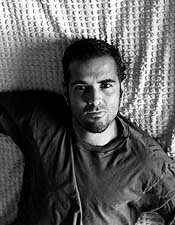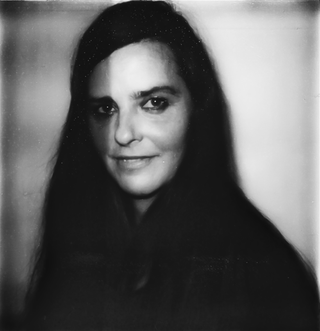Related Research Articles

Elián González Brotons is a Cuban industrial engineer and politician who, as a young child, became embroiled in an international custody and immigration controversy in 2000 involving the governments of Cuba and the United States, his father Juan Miguel González Quintana, his other relatives in Cuba and in Miami, and Miami's Cuban community.

Susan Meiselas is an American documentary photographer. She has been associated with Magnum Photos since 1976 and been a full member since 1980. Currently she is the President of the Magnum Foundation. She is best known for her 1970s photographs of war-torn Nicaragua and American carnival strippers.

Granma is a yacht that was used to transport 82 fighters of the Cuban Revolution from Mexico to Cuba in November 1956 to overthrow the regime of Fulgencio Batista. The 60-foot diesel-powered vessel was built in 1943 by Wheeler Shipbuilding of Brooklyn, New York, as a light armored target practice boat, US Navy C-1994, and modified postwar to accommodate 12 people. "Granma", in English, is an affectionate term for a grandmother; the yacht is said to have been named for the previous owner's grandmother.

Russell Earl Banks was an American writer of fiction and poetry. His novels are known for "detailed accounts of domestic strife and the daily struggles of ordinary often-marginalized characters". His stories usually revolve around his own childhood experiences, and often reflect "moral themes and personal relationships".

Félix González-Torres or Felix Gonzalez-Torres was a Cuban-born American visual artist. He lived and worked primarily in New York City between 1979 and 1995 after attending university in Puerto Rico. González-Torres’s practice incorporates a minimalist visual vocabulary and certain artworks that are composed of everyday materials such as strings of light bulbs, paired wall clocks, stacks of paper, and individually wrapped candies. González-Torres is known for having made significant contributions to the field of conceptual art in the 1980s and 1990s. His practice continues to influence and be influenced by present-day cultural discourses. González-Torres died in Miami in 1996 from AIDS-related illness.

Heberto Juan Padilla was a Cuban poet put to the center of the so-called Padilla affair when he was imprisoned for criticizing the Cuban government. He was born in Puerta de Golpe, Pinar del Río, Cuba. His first book of poetry, Las rosas audaces, was published in 1949. Although Padilla initially supported the revolution led by Fidel Castro, by the late 1960s he began to criticize it openly and in 1971 he was imprisoned by the Cuban government.
Gilles Peress is a French photographer and a member of Magnum Photos.

Paul Graham is a British fine-art and documentary photographer. He has published three survey monographs, along with 17 other publications.

Rineke Dijkstra HonFRPS is a Dutch photographer. She lives and works in Amsterdam. Dijkstra has been awarded an Honorary Fellowship of the Royal Photographic Society, the 1999 Citibank Private Bank Photography Prize and the 2017 Hasselblad Award.
Jason Eskenazi is an American photographer, based in Brooklyn, New York. The majority of his photography is from the countries of the former Soviet Union, including his book Wonderland: A Fairy Tale of the Soviet Monolith (2008).

René Portocarrero was a Cuban artist recognised internationally for his achievements.

María Elena González is a Cuban-American sculptor based in Brooklyn and the Bay Area. She is known for objects, installations and public art that interweave post-minimalist form, conceptual art and concern for materials and craft. Her early work explored themes of memory, family, identity, loss and dislocation through formal, architectural and mapping modes that address site, place and social circumstances; her later work makes connections between nature and art, engaging a broad range of media and sensory experience. In 2020, artist and scholar Ellen Levy wrote "González's art re-invents nature as culture" through an "exquisite attunement" that uncovers formal and thematic analogies between both realms and synesthetic connections between visual and aural senses.
Mark Cohen is an American photographer best known for his innovative close-up street photography.
Gary Schneider is a South African-born American photographer known for his portraiture and self-portraits. According to the John Simon Guggenheim Memorial Foundation, which awarded him a Guggenheim Fellowship in 2013, his "early work in painting, performance, and film remain integral to his explorations of portraiture. He strives to marry art and science, identity and obscurity, figuration and abstraction, the carnal and the spiritual."

Alex Webb is a photographer who makes vibrant and complex color photographs. He has been a member of Magnum Photos since 1979.
W. Eugene Smith Memorial Fund is an organisation established to encourage and support individuals who are active in the field of photography for humanitarian purposes. It gives out the W. Eugene Smith Grant and Howard Chapnick Grant.

Jon Lowenstein is an American documentary photographer, filmmaker, and visual artist. His work focuses on confronting the complex issues of wealth inequality, structural racism, and violence.
Leon Levinstein (1910–1988) was an American street photographer best known for his work documenting everyday street life in New York City from the 1950s through the 1980s. In 1975 Levinstein was awarded a Guggenheim Fellowship from the John Simon Guggenheim Memorial Foundation.
Carolyn Drake is an American photographer based in Vallejo, California. She works on long term photo-based projects seeking to interrogate dominant historical narratives and imagine alternatives to them. Her work explores community and the interactions within it, as well as the barriers and connections between people, between places and between ways of perceiving. her practice has embraced collaboration, and through this, collage, drawing, sewing, text, and found images have been integrated into her work. She is interested in collapsing the traditional divide between author and subject, the real and the imaginary, challenging entrenched binaries.

Darcy Marie Padilla is an American narrative photographer and photojournalist who specializes in long-term narrative projects centering on social issues such as urban poverty, drug addiction and HIV/AIDS. She was a Guggenheim Fellow and the recipient of a W. Eugene Smith Award and three World Press Photo awards. She is best known for "The Julie Project" and its related series "Family Love", which both follow an impoverished young woman from 1993 until her death in 2010. Padilla has been a faculty member at University of Wisconsin–Madison since 2018.
References
- 1 2 3 4 "Ernesto Bazan". World Press Photo . Retrieved 21 March 2024.
- 1 2 3 4 Estrin, James (18 October 2017). "A 'Soulful Journey' in a Family Photo Album". Lens Blog. Retrieved 24 March 2024.
- ↑ Gonzalez, David (3 October 2014). "Ernesto Bazan's Cuban Trilogy". The New York Times. Retrieved 21 March 2024.
- ↑ "Camaraderie in Cuba: Ernesto Bazan's Self-Publishing Philosophy". Time. 22 February 2012. Retrieved 21 March 2024.
- ↑ Gonzalez, David (8 June 2011). "Another Cuba, a Different Fidel". The New York Times. Retrieved 22 March 2024.
- ↑ Gonzalez, David (30 September 2009). "Showcase: Sisyphean Days in Cuba". The New York Times. Retrieved 22 March 2024.
- ↑ "Raw Poetry: Ernesto Bazan in Cuba". Art Museum of the Americas. Retrieved 24 March 2024.
- ↑ "Review: Bazan Cuba". Evergreen Review. Retrieved 23 March 2024.
- ↑ "1998 Ernesto Bazan". W. Eugene Smith Memorial Fund. Retrieved 21 March 2024.
- ↑ "Ernesto Bazan". John Simon Guggenheim Memorial Foundation. Retrieved 21 March 2024.
- ↑ Wild, Stephi. "'Raw Poetry: Ernesto Bazan and Cuba' Exhibit comes to The OAS AMA | Art Museum of the Americas". BroadwayWorld.com. Retrieved 23 March 2024.
- ↑ "Ernesto Bazan". The Art Institute of Chicago. 1959. Retrieved 21 March 2024.
- ↑ "Works | Ernesto Bazan". mfah.org. Retrieved 21 March 2024.
- ↑ "Bazan, Ernesto". SFMOMA. Retrieved 21 March 2024.